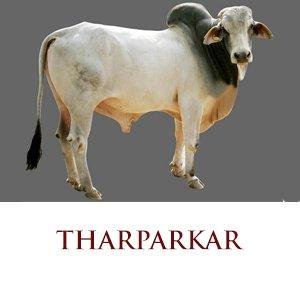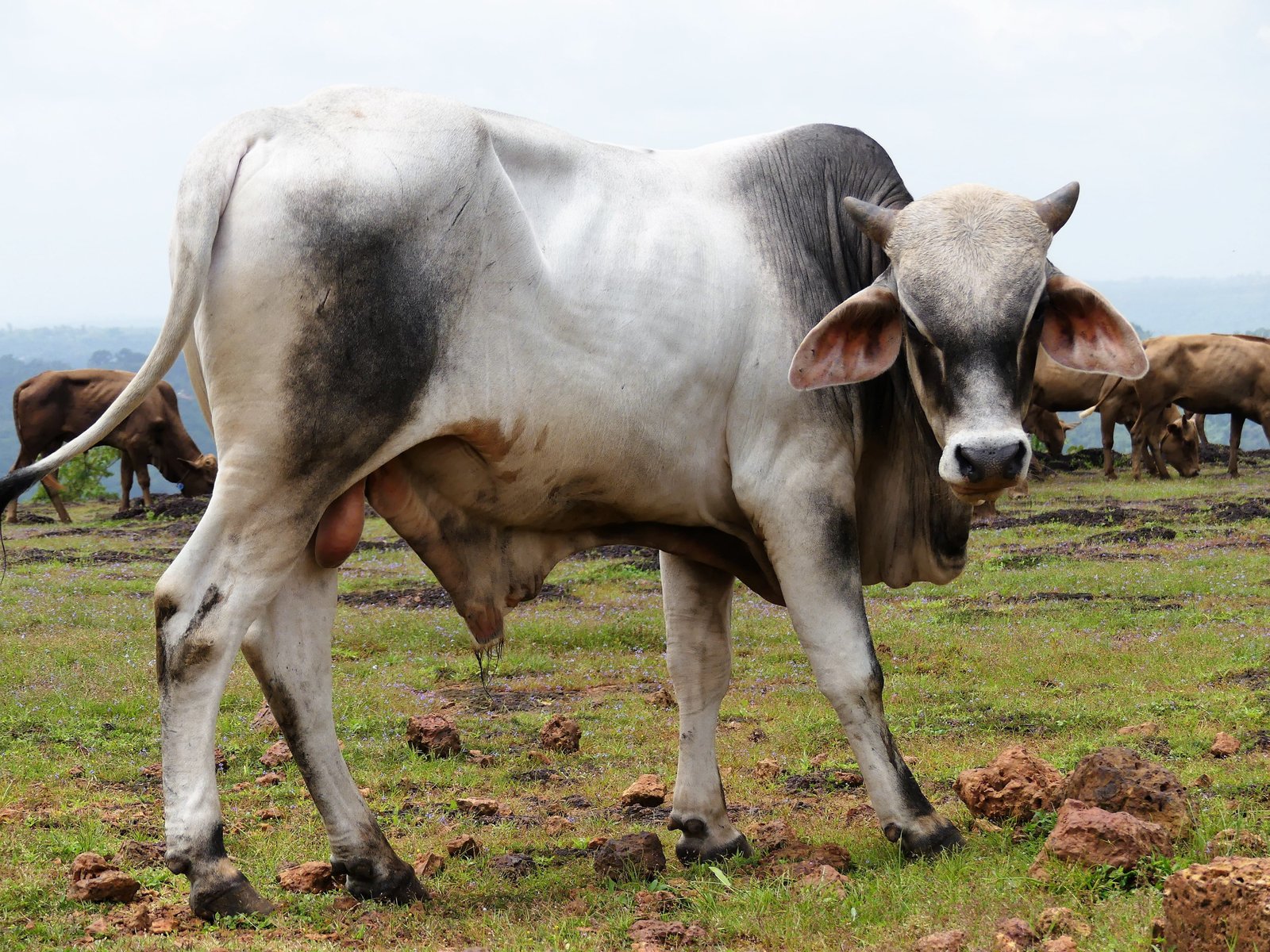Tharparkar

Tharparkar is an important dual-purpose breed originating from the THAR desert of Rajasthan. The home tract of this breed is in the Tharparkar district of southeast Sindh in present day Pakistan. In India, these animals are now found along the Indo-Pak border covering western Rajasthan and up to the Rann of Kutch in Gujarat.
Tharparkar is a lyre-horned type of zebu cattle and seems to have originated from a mixture of the Kankrej, Red Sindhi, Gir and Nagori breeds. Tharparkar cattle are usually kept in herds of 50 to 300 animals by professional breeders as they require daily contact with people to prevent them from becoming shy and wild.
Characteristics :-
- These animals are generally deep, strongly built, medium-sized, with straight limbs and good feet, and with an alert and springy carriage.
- Their average height is 138 cm and average weight is 408 kgs.
- The average body weight of a female is approximately 350 kgs.
- Their color is generally white or gray but black, red or combinations of same are also found. Neck, hump, hind quarters are black and backbone has light gray stripe. Their color deepens during winter months and also when the cows get pregnant.
- Their forehead is broad and flat and slightly convex above the eyes.
- Their head is of medium size and front of the horns and face is on one plane.
- Their skin between the eyes often has perpendicular wrinkles.
- Their eyes are full and bright with black eyelashes.
- Their ears are long, broad and semi-pendulous and face forwards.
- The horns are set well apart curving gradually upwards and outwards. Males have thicker, shorter and straighter horns as compared to the females.
- The hump in the males is moderately well developed and firm.
- The dewlap is of medium size and their skin is fine and mellow.
- The sheath in the males is of moderate length, and is semi-pendulous.
- The navel flap in the females is prominent and the size is variable.
- The shoulders are light and the legs are in proportion but comparatively short.
- The hooves are hard and black and of moderate size.
- They are said to be very hardy and resistant to several tropical diseases.
- Their average age at maturity is 36 months.
- Average age at first calving is 45 months
- Average calving interval is 410 days
- Average milk yield is 2000kg
Conservation Efforts
It is interesting to note that a move has begun to popularize the Tharparkar breed. Sixty Tharparkar cattle heads, including fifty cows, from the desert belt of Jaisalmer has been dispatched to the drought-prone districts of Tamil Nadu. These have been bought by the State Animal Husbandry Department at Jaisalmer and are being raised at the cattle farm at Chettinad. The animals, known for their drought resistance, have adapted to the dry climatic condition of Chettinad.
“Even in the extreme dry condition at Thar desert in Rajasthan, the cows look hale and healthy and yield an average of 7 to 8 litres of milk per day. The climatic condition in Tamil Nadu is better than Rajasthan. The cattle are hardy and resistant to many diseases and they can withstand the heat in summer too,” says K.S. Vijaya Kumar, Assistant Veterinary Surgeon, Animal Diseases Intelligence Unit, Sivaganga.
This new initiative is part of the National Agriculture Development Programme to increase the population of Tharparkar cows in a fast manner. We, at Surabhivana, wholeheartedly support this movement.
Indian Cow Facts
Brazil is the biggest exporter of Indian Gir Cows and these cow records over 62 litres milk/day in Brazil.

